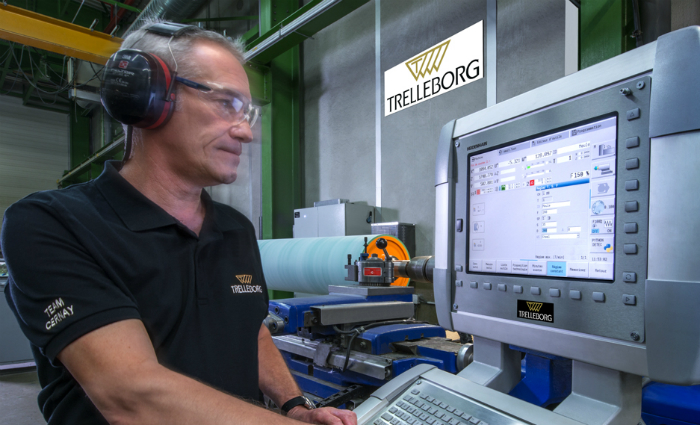Trelleborg’s has upgraded its range of polyurethane coverings for its tissue converting rollers – the new Rollin Pless Plast 4 and Press Plast 4D.
Guillaume Bordais, sales and business development manager for rollers and belts at Trelleborg, says, “Rollin Press Plast 4 contains a new polyurethane covering specifically designed for marrying rolls in the process of tissue converting. This incorporates several features that enable higher levels of productivity. For example, antistatic properties prevent the deposit of residues on the roller and allow for an easier cleaning operation.”
Other features include an extended mechanical stress resistance and longer lifetime and improved bonding of materials during production. Trelleborg says Rollin Pless Plast 4 offers a high abrasion resistance, good dimensional stability and low surface roughness. It has a concentricity tolerance of < 20 μm and a cylindricity of < 50 μm. The blue roller has a hardness of 90 to 98 Shore A and a maximum working speed of 800 m/min.
Bordais says, “Press Plast 4D combines the advantage of both Shore D and Shore A hardness. The 90 Shore A inner layer allows the rubber covering to be flexible and is able to adapt to the different settings of a lamination unit, which may change according to the final product configuration. The outside 65 Shore D layer enables perfect bonding of plies, whatever their number. Re-embossing of the bottom ply is prevented by the high pressure applied in the narrow nip footprint.”
Features built into this latest roller covering, designed to improve quality and productivity, include antistatic properties, abrasion resistance, dimensional stability, low surface roughness, extended mechanical stress resistance, ability to match different nip footprints, and increased specific pressure, which allows a narrow nip footprint.
Bordais adds, “Press Plast 4D withstands load changes while maintaining an even nip footprint and is therefore suitable for the most versatile production situations.
“The ability to clean the roller easily and quickly reduces downtime, while the outstanding rebound of the compound allows perfect assembly of the plies, preserving production thickness, with an even bulk along the entire log.”


